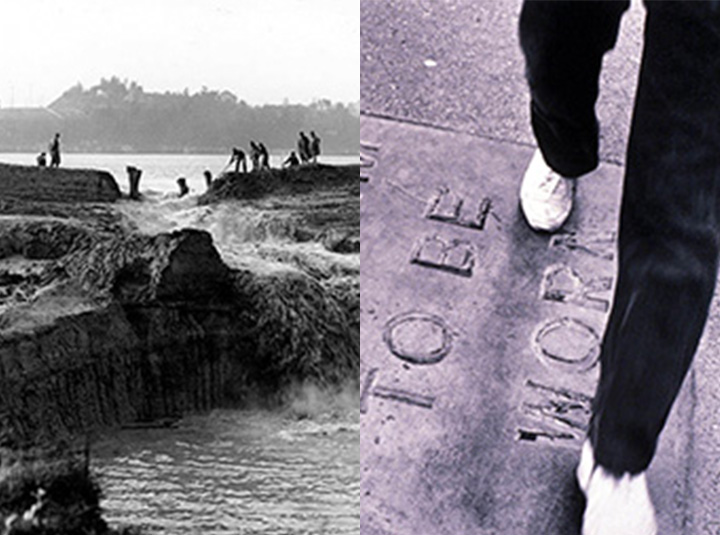The Foreshore: Session 7

A series of informal sessions of research and knowledge exchange.
[su_spacer size=”10″]
Tuesday, Feburary 7, 2017, 7:00 – 9:00 p.m.
222 E Georgia Street
Vancouver, BC Canada
map
Join us for these brief presentations followed by discussion.
Buster Simpson will speak about how aesthetics can provoke curiosity, discovery and connections that reveal the multiple, sometimes conflicting layers of meaning intrinsic to place. In this way artists working in the public realm can provide a counter balance and edge to the proliferation of the notion of spectacle, such as “way finding”, “branding” and “identity packaging”.
Cities are central technologies of settler colonialism, and the landscapes they produce are palimpsests of power, exclusion, and survivance. Coll Thrush will talk about these issues based on his research on the connections between Indigenous and urban histories in North America and elsewhere. In particular, he will discuss the relationship between historical trauma, transformations of Indigenous territories, and the ways in which both settler and Indigenous memory are bound up in the land itself. This will be a place-based presentation, using particular sites and their stories to illuminate broader themes about meaning, belonging, and power.
*
Buster Simpson, an artist active since the 1970s, has worked on major infrastructure projects, site master planning, signature sculptures, museum installations, and community projects. Simpson has exhibited at The New Museum, MoMA PS1, Seattle Art Museum, The Hirshhorn Museum, Capp Street Project, International Glass Museum, and a recent retrospective at the Frye Art Museum. Simpson’s work is included in numerous public commissions throughout North America. Presently, he is working on commissions for the Seattle Seawall, a large landfill in San Antonio, Texas, and the Willamette River Greenway in Portland, Oregon and a pergola for the Seattle Amtrak Station. In the past two years, Simpson has conducted two five-week climate change confab at the Rauschenberg Foundation on Captiva Island, Florida. Simpson often melds social and ecological concerns into an aesthetic, and continues to employ intervention and temporary prototypes as a way to inform his more lasting works in public. www.bustersimpson.net.
Coll Thrush is associate professor of history at the University of British Columbia, where he teaches Indigenous, settler colonial, and place-based histories. He is the author of Native Seattle: Histories from the Crossing-Over Place, a second edition of which will be published in February 2017. He is also the co-editor of Phantom Past, Indigenous Presence: Native Ghosts in North American Culture and History (2011) and Indigenous London: Native Travelers at the Heart of Empire (2016). His current project, entitled SlaughterTown, focuses on landscape, trauma, and memory in his hometown of Auburn, Washington, formerly known as Slaughter.
*
The Foreshore is a year-long collaboration between Access Gallery and Other Sights’ for Artist Projects inspired by the deep influence of the waterways on our cities and societies on the West Coast.
The foreshore is a place of unclear jurisdiction, and thus of contestation, friction, and constant movement. Those who dwell in this zone must continually adapt to a changing environment. The foreshore also conjures histories specific to this region: narratives of trade and exchange, habitation and nourishment, resistance and violent erasure. It might similarly evoke our contemporary lived situation in this place. Considering the potential of this zone as both concept and site, The Foreshore initiative asks the following: how do we generate conditions of emergence? How can we take up space differently? How do we support unruly practices and futures?
*
Images: (Left) University of Washington Libraries, Special Collections Division.
Workers cut away the coffer dam on the ‘Montlake Cut’ in Seattle in 1916, which would connect two lakes, destroy a river, and have dramatic effects for local Coast Salish people.
(Right) “Poem To Be Worn”, 1986, Buster Simpson.
Hand carved Wilkenson sandstone placed on First Avenue at Virginia (NE corner). Wear is integral to the poem’s premise.